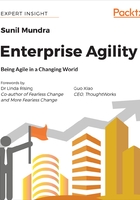
Significance
Our minds, for several centuries, have been used to a much slower pace of change. Our brains have been wired to favor predictability, certainty, and risk aversion. However, the basic properties of complexity are unpredictability and uncertainty. We have a hindsight bias which makes us believe that things are predictable, even when they are not.
According to Peter Green, who led a grassroots Agile transformation at Adobe from 2005 to 2015:
"Hindsight bias leads us to treat complex work as predictable. Instead of using empirical processes based on transparency and frequent inspection and adaptation loops, we do extensive up-front planning and implement stricter controls to meet the original plan. Years of "lessons learned" sessions caused us to move further and further from the right approach." [i]
Until very recently, and perhaps even today, our formal education was largely oriented towards a linear way of thinking, tight cause-effect relationships, frowning on ambiguity, rewarding conformity, discouraging challenging with a different perspective, and, most importantly, believing that there is one right way or one best way of doing things.
However, many things around us as individuals, and in the business environment, have changed, and changed quite fast, with the advent of the internet era. They are expected to change at a faster rate still in the fourth industrial revolution.
What is needed in this highly-dynamic era, and a complex environment, are the abilities to deal with uncertainty, to adapt to change, to unlearn what does not work, and to learn what works and how best to respond to change. A mindset that has these key qualities is the agility-oriented mindset. Having this mindset is an absolute must for achieving agility, as without it, all overt measures to enhance agility are extremely likely to fail or at best have very little impact.
According to Steve Denning, author of multiple books, including The Leader's Guide to Radical Management:
"Having an Agile mindset is central. If you had the right mindset, it hardly mattered what tools and processes you were using, the Agile mindset made things come out right. Conversely, if you didn't have an Agile mindset, it didn't matter if you were implementing every tool and process and system exactly according to the book, no benefits flowed." [ii]
The point made by Denning is critical, as it highlights the irrefutable fact that Agile is about "being" and not "doing." The abilities of adapting and learning are intrinsic in nature and can be acquired, developed, and exhibited only if one has the Agile mindset.
The case of enterprise culture is similar to that of mindset, in that a culture that is agility-oriented is very different from the culture of a business not set up for agility. As seen in the previous chapter, companies need to become "living" systems if they aspire for greater agility. The basic trait of a living enterprise is that it is based on people-centric values such as trust and transparency, rather than machine-centric values such as compliance and control.
What is DNA to humans, is culture to organizations. It is embedded in every single element of the enterprise, right from leadership and strategy, to people, processes and structure. Hence, as difficult as it might be to change the culture of a business, it is absolutely imperative to have a culture that not only helps to enhance agility but to sustain it as well.
Mike Dargan, the group head of technology at UBS, believes that:
"culture is the most important platform a bank can build."
He adds:
"A strong culture ensures that everyone is focused on delivering for our clients, not ourselves. A strong culture allows us to challenge the status quo, learn from our mistakes and act with integrity. A strong culture insulates a bank from over-reliance on any single leader. It diversifies leadership risk over time. A strong culture of collaboration and trust allows for the most complex problems of an organization to be solved. Without it, they can fester for years, if not decades." [iii]
Before delving into how mindset and culture can be aligned for agility, it is important to understand what they are and what influences them.